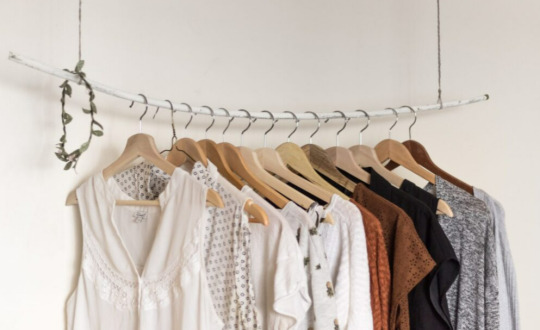#Mass Appeal India
Explore tagged Tumblr posts
Text
I love reading how upper class Brahmins adapted the culture of so called dalit communities during the middle ages. I love how they bramhinized the culture of the people whom they discarded from their society to save their religion during the Islamic Invasion. The lower class communities created their own gods to fulfill their needs as they were not allowed to worship the gods of the upper class. They created god like Manasa(the godess of snakes), Chandi(a localised version of Durga), Dharma ,Annoda or Annapurna. Even the Radha whom the desiblr adores and worships was primarily a local goddess a local myth, she was not a part of the veda purana tradition of upper class Hindus. The only reason they decided to adopt these local, small deities is because the bramhins felt threatened by the rise of Islam in India . Therefore they decided to include these gods in their upper class stories by creating new tales so they could appeal to the common mass.
247 notes
·
View notes
Text
Christmas pudding [...] [is] a boiled mass of suet - a raw, hard animal fat [...] often replaced with a vegetarian alternative - as well as flour and dried fruits that is often soaked in alcohol and set alight. [...] [I]t is a legacy of the British Empire with ingredients from around the globe it once dominated [...].
Christmas pudding is a relatively recent concoction of two older, at least medieval, dishes. [...] “Figgy pudding,” immortalized in the “We Wish You a Merry Christmas” carol, appeared in the written record by the 14th century. [...] During the 18th century, the two ["plum pottage" and "figgy pudding"] crossed to become the more familiar plum pudding – a steamed pudding packed with the ingredients of the rapidly growing British Empire of rule and trade. The key was less a new form of cookery than the availability of once-luxury ingredients, including French brandy, raisins from the Mediterranean, and citrus from the Caribbean.
Few things had become more affordable than cane sugar which, owing to the labors of millions of enslaved Africans, could be found in the poorest and remotest of British households by mid-century. Cheap sugar, combined with wider availability of other sweet ingredients like citrus and dried fruits, made plum pudding an iconically British celebratory treat, albeit not yet exclusively associated with Christmas.
Such was its popularity that English satirist James Gillray made it the centerpiece of one of his famous cartoons, depicting Napoleon Bonaparte and the British prime minister carving the world in pudding form.

In line with other modern Christmas celebrations, the Victorians took the plum pudding and redefined it [...], making it the “Christmas pudding.” In his 1843 internationally celebrated “A Christmas Carol,” Charles Dickens venerated the dish as the idealized center of any family’s Christmas feast [...].
Three years later, Queen Victoria’s chef published her favored recipe, making Christmas pudding, like the Christmas tree, the aspiration of families across Britain.
Christmas pudding owed much of its lasting appeal to its socioeconomic accessibility. Victoria’s recipe, which became a classic, included candied citrus peel, nutmeg, cinnamon, lemons, cloves, brandy and a small mountain of raisins and currants – all affordable treats for the middle class. Those with less means could either opt for lesser amounts or substitutions [...]. Eliza Acton, a leading cookbook author of the day who helped to rebrand plum pudding as Christmas pudding, offered a particularly frugal recipe that relied on potatoes and carrots. [...] The high alcohol content gave the puddings a shelf life of a year or more, allowing them to be sent even to the empire’s frontiers during Victoria’s reign [...].
---
In the 1920s, the British Women’s Patriotic League heavily promoted it – calling it “Empire Pudding” in a global marketing campaign. They praised it as emblem of the empire that should be made from the ingredients of Britain’s colonies and possessions: dried fruits from Australia and South Africa, cinnamon from Ceylon, spices from India and Jamaican rum in place of French brandy.
Press coverage of London’s 1926 Empire Day celebrations featured the empire’s representatives pouring the ingredients into a ceremonial mixing bowl and collectively stirring it.
The following year, the Empire Marketing Board received King George V’s permission to promote the royal recipe, which had all the appropriate empire-sourced ingredients. Such promotional recipes and the mass production of puddings from iconic grocery stores like [Sains-bury's] in the 1920s combined to place Christmas puddings on the tables [...].
---
All text above by: Troy Bickham. "How the Christmas pudding, with ingredients taken from the colonies, became an iconic British food." The Conversation. 8 December 2023. [Bold emphasis and some paragraph breaks/contractions added by me. Image and caption shown unaltered as they appear published by Bickham along with the article's text.]
55 notes
·
View notes
Text


YOUNG COMRADES,
Our country is passing through a chaos. There is mutual distrust and despair prevailing everywhere. The great leaders have lost faith in the cause and most of them no more enjoy the confidence of the masses. There is no programme and no enthusiasm among the ‘champions’ of Indian independence. There is chaos everywhere. But chaos is inevitable and a necessary phase in the course of making of a nation. It is during such critical periods that the sincerity of the workers is tested, their character built, real programme formed, and then, with a new spirit, new, hopes, new faith and enthusiasm, the work is started. Hence there is nothing to be disgusted of.
We are, however, very fortunate to find ourselves on the threshold of a new era. We no more hear the news of reaching chaos that used to be sung vastly in praise of the British bureaucracy. The historic question “Would you be governed by sword or pen”, no more lies unanswered. Those who put that question to us have themselves answered it. In the words of Lord Birkenhead, “With the sword we won India and with the sword we shall retain it.” Thanks to this candour everything is clear now. After remembering Jallianwala and Manawala outrages it looks absurd to quote that “A good government cannot be a substitute for self-government.” It is self-evident.
A word about the blessings of the British rule in India. Is it necessary to quote the whole volumes of Romesh Chandra Dutt, William Digby and Dadabhai Naoroji in evidence to prove the decline and ruin of Indian industries? Does if require any authorities to prove that India, with the richest soil and mine, is today one of the poorest, that India which could be proud of so glorious a civilisations, is today the most backward country with only 5% literacy? Do not the people know that India has to pay the largest toll of human life with the highest child death rate in the world? The epidemics like plague, cholera, influenza and such other diseases are becoming common day by day. Is it not disgraceful for us to hear again and again that we are not fit for self-government? Is it not really degrading for us, with Guru Govind Singh, Shivaji and Hari Singh as our heroes; to be told that we are incapable of defending ourselves? Alas, we have done little to prove the contrary. Did we not see our trade and commerce being crushed in its very infancy in the first effort of Guru Nanak steamship co-started by Baba Gurdit Singh in 1914; the inhuman treatment meted out to them, far away in Canada, on the way and finally, the bloody reception of those despairing, broken-hearted passengers with valleys of shots at Bajbaj, and what not? Did we not see all this? In India, where for the honour of one Dropadi, the great Mahabharat was fought, dozens of them were ravaged in 1919. They were spit at, in their naked faces. Did we not see all this? Yet, we are content with the existing order of affairs. Is this life worth living?
Does it require any revelation any revelation now to make us realise that we are enslaved and must be free? Shall we wait for an uncertain sage to make us feel that we are an oppressed people? Shall we expectantly wait for divine help or some miracle to deliver us from bondage? Do we not know the fundamental principles of liberty? “Those who want to be free, must themselves strike the blow.” Young men, awake, arise; we have slept too long!
We have appealed to the young only. Because the young bear the most inhuman tortures smilingly and face death without hesitation. Because the young bear the most inhuman tortures smilingly and face death without hesitation. Because the whole history of human progress is written with the blood of young men and young women. And because the reforms are ever made by the vigour, courage, self-sacrifice and emotional conviction of the young men who do not know enough to be afraid and who feel much more than they think.
Were it not the young men of Japan who come forth in hundreds to throw themselves in the ditches to make a dry path to Port Arthur? And Japan is today one of the foremost nations in the world. Were it not the young Polish people who fought again and again and failed, but fought again heroically throughout the last century? And today we see a free Poland. Who freed Italy from the Austrian yoke? Young Italy.
Do you know the wonders worked by the Young Turks? Do you not daily read what the young Chinese are doing? Were it not the young Russians who scarified their lives for Russians emancipation? Throughout the last century hundreds and thousands of them were exiled to Siberia for the mere distribution of socialist pamphlets or, like Dostoyevsky, for merely belonging to socialist debating society. Again and again they faced the storm of oppression. But they did not lose the courage. It were they, the young only, who fought. And everywhere the young can fight without hope, without fear and without hesitation. And we find today in the great Russia, the emancipation of the world.
While, we Indians, what are we doing? A branch of peepal tree is cut and religious feelings of the Hindus are injured. A corner of a paper idol, tazia, of the idol-breaker Mohammedans is broken, and ‘Allah’ gets enraged, who cannot be satisfied with anything less than the blood of the infidel Hindus. Man ought to be attached more importance that the animals and, yet, here in India, they break each other’s heads in the name of ‘sacred animals’. Our vision is circumscribed by…. * thinks in terms of internationalism.
There are many others among us who hide their lethargy under the garb of internationalism. Asked to serve their country they reply: “Oh Sirs, we are cosmopolitans and believe in universal brotherhood. Let us not quarrel with the British. They are our brothers.” A good idea, a beautiful phrase. But they miss its implication. The doctrine of universal brotherhood demands that the exploitation of man by man and nation be nation must be rendered impossible. Equal opportunity to all without any sort of distinction. But British rule in India is a direct negation of all these, and we shall have nothing to do with it.
A world about social servicre here. Many good men think that social service (in the narrow sense, as it is used and under stood in our country) is the panacea to all our ills and the best method of serving the country. Thus we find many ardent youth contending themselves with distributing grain among the poor and nursing the sicks all their life. These men are noble and self-denying but they cannot understand that charity cannot solve the problem of hunger and disease in India and, for that matter, in any other country.
Religious superstitions and bigotry are a great hinderance in our progress. They have proved an obstacle in our way and we must do away with them. “The thing that cannot bear free thought must perish.” There are many other such weakness which we are to overcome. The conservativeness and orthodoxy of the Hindus, extra-territorialism and fanaticism of the Mohammedans and narrow-mindedness of all the communities in general are always exploited by the foreign enemy. Young men with revolutionary zeal from all communities are required for the task.
Having achieved nothing, we are not prepared to sacrifice anything for any achievement; our leaders are fighting amongst themselves to decide what will be the share of each community in the hoped achievement. Simply to conceal their cowardice and lack of spirit of self-sacrifice, they are creating a false issue and screening the real one. These arm-chair politicians have their eyes set on the handful of bones that may be thrown to them, as they hope, by the mighty rulers. That is extremely humiliating. Those who come forth to fight the battle of liberty cannot sit and decide first that after so much sacrifices, so much achievement must be sure and so much share to be divided. Such people never make any sort of sacrifice. We want people who may be prepared to fight without hope, without fear and without hesitation, and who may be willing to die unhonoured, unwept and unsung. Without that spirit we will not be able to fight the great two-fold battle that lies before us – two-fold because of the internal foe, on the one hand, and a foreign enemy, on the other. Our real battle is against our own disabilities which are exploited by the enemy and some of our own people for their selfish motives.
Young Punjabis, the youth of other provinces are working tremendously in their respective spheres. The organisation and awakening displayed by young Bengal on February 3, should serve as an example to us. Our Punjab, despite the greatest amount of sacrifice and suffering to its credit, is discribed as a politically backward province. Why? Because, although it belong to the martial race, we are lacking in organisation and discipline; we who are proud of the ancient University of Texila, today stand badly in need of culture. And a culture requires fine literature which cannot be prepared without a common and well developed language. Alas, we have got none.
While trying to solve the above problem that faces our country, we will also have to prepare the masses to fight the greater battle that lies before us. Our political struggle ‘began just after the great War of Independence of 1857. It has passed through different phases. Along with the advent of the 20th century the British bureaucracy has adopted quite a new policy towards India. They are drawing our bourgeoisie and petty bourgeoisie into their fold by adopting the policy of concessions. Their cause is being made common. The progressive investment of British capital in India will inevitably lead to that end. In the very near future we will find that class and their great leaders having thrown their lot with the foreign rulers. Some round-table conference or any such body will end in a compromise between the two. They will no more be lions and cubs. Even without any conciliation the expected Great War of the entire people will surely thin the ranks of the so-called champions of India independence.
The future programme of preparing the country will begin with the motto: “Revolution by the masses and for the masses.” In other words, Swaraj for the 90%; Swaraj not only attained by the masses but also for the masses. This is a very difficult task. Thought our leaders have offered many suggestion, none had the courage to put forward and carry out successfully and concrete scheme of awakening the masses. Without going into details, we can safely assert that to achieve our object, thousands of our most brilliant young men, like Russian youth, will have to pass their precious lives in village and make the people understand what the Indian revolution would really mean. They must be made to realise that the revolution which is to come will mean more than a change of masters. It will, above all, mean the birth of new order of things, a new state. This is not the work of a day or a year. Decades of matchless self-sacrifice will prepare the masses for the accomplishment of that great work and only the revolutionary young men will be able to do that. A revolutionary does not necessarily mean a man of bombs and revolvers.
The task before the young is hard and their resources are scanty. A great many obstacles are likely to block their way. But the earnestness of the few but sincere can overcome them all. The young must come forth. They must see the hard and difficult path that lies before them, the great tasks they have to perform. They must remember in the heart of hearts that “success is but a chance; sacrifice a law”. Their lives might be the lives of constant failures, even more wretched than those which Guru Govind Singh had to face throughout his life. Even then they must not repent and say, “Oh, it was all an illusion.”
Young men, do not get disheartened when you find such a great battle to fight single-handed, with none to help you. You must realise your own latent strength. Rely on yourselves and success is yours. Remember the words of the great mother of James Garfield which she spoke to her son while sending him away, penniless, helpless and resourceless, to seek his fortune: “Nine times out of ten the best thing that can happen to a young man is to be thrown overboard to swim or sink for himself.” Glory to the mother who said these words and glory to those who will rely on them.
Mazzini, that oracle of Italian regeneration, once said: “All great national movements begin with unknown men of the people without influence, except for the faith and the will that counts neither time nor difficulties.” Let the boat of life weigh another time. Let it set sail in the Great Ocean, and then:
Anchor is in no stagnant shallow. Trust the wide and wonderous sea, Where the tides are fresh for ever, And the mighty currents free. There perchance, O young Columbus, Your new world of truth may be.
Do not hesitate, let not the theory of incarnation haunt your mind and break your courage. Everybody can become great if he strives. Do not forget your own martyrs. Kartar Singh was a young man. Yet, in this teens, when he came forth to serve his country, he ascended the scaffold smiling and echoing “Bande Mataram”. Bhai Balmukund and Awadh Bihari were both quite young when they gave their lives for the cause. They were from amongst you. You must try to become as sincere patriots and as ardent lovers of liberty as they were. Do not lose patience and sense at one time, and hope at another. Try to make stability and determination a second nature to yourselves.
Let then young men think independently, calmly, serenely and patiently. Let them adopt the cause of Indian independence as the sole aim of their lives. Let them stand on their own feet. They must organise themselves free from any influence and refuse to be exploited any more by the hypocrites and insincere people who have nothing in common with them and who always desert the cause at the critical juncture. In all seriousness and sincerity, let them make the triple motto of “service, suffering, sacrifice” their sole guide. Let them remember that “the making of a nation requires self-sacrifice of thousands of obscure men and women who care more for the idea of their country than for their own comfort and interest, than own lives and the lives of those who they love”.
#jallianwala bagh#india#indian anarchism#desiblr#desi#naujawan bharat sabha#bhagawati charan vohra#community building#practical anarchy#practical anarchism#anarchist society#practical#faq#anarchy faq#revolution#anarchism#daily posts#communism#anti capitalist#anti capitalism#late stage capitalism#organization#grassroots#grass roots#anarchists#libraries#leftism#social issues#economy#economics
18 notes
·
View notes
Text
I try not to be negative here. Like there's just too much negativity in this webbed site as is and I don't wanna add on to it
BUT god it's so hard not to shit on Mihoyo's character designs
Like I could write a whole fucking essay on why Yae Miko maybe has the ONLY good character design in Inazuma, and how Kokomi's and Raiden's designs are an affront to character design
Not to mention how much I could dunk on how pasty white the entirety of their fantasy India is
...but that would take like an ungodly amount of words and effort and ranting, and like I said I wanna keep negativity to a minimum
so instead I'm gonna do a little "bulk dunk" and go for the entirety of HSR in one go
quick disclaimer that I still play and enjoy these games and Jingliu has me by the balls no matter how painfully boring her character design actually is
ALRIGHT LET'S GO!
I guess it goes without saying that the design of any character in a gacha game is created with only a single thought in mind and that is: MASS MARKET APPEAL!
Which means the characters are meant to be PRETTY and their designs are meant for immediate appeal, not to actually inform the character
This results in some...weirdness


Like the fact that the Natasha (girl on the left) raised Seele (girl on the right) from childhood and used to run an orphanage, meaning she's much MUCH older than Seele, even tho they look about the same age
Okay Nat does look a little older, but no one is allowed to look old in this game
Something that becomes extra clear with

Serval! Who you'd be forgiven for thinking is a young adult playing for a rock band, and not a middle aged disgraced scientist who used to be in a rock band.
And yeah she's supposed to be AT LEAST in her 30s, because girl is the same age as Cocolia and that woman is a mother to an adult woman by the time we meet her
Oh and speaking of Nat and Serval, you've now seen 2/3s of all characters with ANY FORM OF BLEMISHES ON THEIR SKIN!
Nat has a spot on her chin, and Serval has a tattoo on her hip
Last one is Arlan

My man has the only two scars in this whole ass video game. He's also the only dark skinned character. He follows a pattern set by Xinyan and Dehya in Genshin, by being dark skin rep, carrying a big sword, and sucking absolute ass
But okay these characters are pretty, but there's nothing wrong with keeping characters pretty. Well, there is when their prettiness goes against what their character is supposed to be
So Belobog's story is one of class struggle in a military state that is holding back a never ending catastrophe. The entire population of the world is just one big walled city holding back the cold.
In it the rich and powerful live in the Overworld, where they have museums and theaters and grand statues, and a massive building from which their rulers can pass judgement.
The Underworld is mostly just a giant fucking mine where the lower class people are forced to work 24/7 in order to get food and medicine from the Overworld in the hopes that they'll keep surviving.
Underworld characters are survivors who have been struggling every day of their lives and have NEVER SEEN SUNLIGHT BEFORE


Yeah guys I can really get hardworking survivor from these two
But I mean that is just ONE planet, it can't be a thing for EVERY world, right? ...right?
So the Xianzhou Luofu is... a lot. Like it would take a long time to explain everything that is up with those guys, but the big themes here are stuff around chronic illness, memories, PTSD, war time trauma, and a whole bunch of stuff about aging
Like here are two characters who are veterans of war. One is constantly overwhelmed by her own traumatic memories, causing her to go into violent dissociative episodes.
The other one lost her copilot/best friend/rival/love of her life (YOU CANNOT CONVINCE ME SHE ISN'T GAY, MIHOYO) in battle, and the trauma of that loss has left her terrified of flying again, living the rest of her life in the shadow of this one monumental event


...yeah I don't see it either
But hey don't worry, this game believes in gender equality, and that means the men are also just very pretty and very boring



Like the Luofu's messiest polycule, who are all millennia old pretty boys made with the sole purpose of making the straight women in the fanbase call them "daddy"
Well at least Blade has spider lily symbolism, which is like always a plus for me
Okay
That's it
That's all the dunking I have for HSR. I exorcised the angry grumpy critic from my system, and can go back to being positive and loving things again.
And I mean these games make more money than I can ever even conceptualize, so maybe I'm the one who is wrong
Oh also

Clara is perfect and objectively the best character design in this game, don't fucking @ me!
#hsr#honkai star rail#natasha#seele#serval#arlan#luka#jingliu#yukong#dan heng#dan heng il#cooler daniel#blade#jing yuan#clara#fuck that's a lot of characters
47 notes
·
View notes
Text

“The central struggle in the world right now is between liberalism and authoritarianism,” said David Brooks, and “the authoritarians have the momentum.” The populist tide is lifting quasi-autocrats in the U.S., India, Hungary, and Turkey, while “straight-up dictators” Vladimir Putin of Russia and Xi Jinping of China expand their power and influence. Why is liberalism in trouble? It has much to recommend it: its strong respect for individual rights and personal choice, its “live-and-let-live tolerance.” But by focusing so heavily on the individual, liberalism fails to address a powerful human need for “primal bonds” with family, ethnic culture, national traditions, and religion. Authoritarians appeal to “faith, family, soil, and flag,” and warn the masses that liberals seek to eradicate all that seems solid — “from your morality to your gender” — and replace it with personal whim. That opens the door to the claim that “we need a strongman to defend us from social and moral chaos.” For liberalism to survive and thrive, it must acknowledge that “people need to feel connected to a transcendent order” that provides continuity, belonging, and meaning. Otherwise, “this is going to be an ugly election year.”
THE WEEK MAY 31, 2024
6 notes
·
View notes
Text


˓⠀⠀﹪ :⠀⠀٬⠀⠀IVYRED.⠀⠀⸻⠀⠀is a fictional four-member girl group under kayak72 consisting of NAVA, SAANVI, MALEKA, and NERIAH. debuting on october 26, 2017, ivyred has largely been credited for reviving their label into vibrancy after their senior brother group, DIEM, saved them from bankruptcy.
based in new york city, the group was scouted by kayak72's creative director, romina richetti through a talent search looking for self-producing female artists throughout major cities around the world. though the group initially began with five scouted members, the fifth member, DANA, would be pulled out of the group by her parents who had previously been told she would be placed in a duo with her older brother DAX.
the group has often drawn parallels between themselves and diem. it is rumored that the members of the two groups do not get along and often are not present in the same rooms. seemingly fueling the fire, members avoni and neriah have been noted saying the diem boys were, "overgrown frat boys", following the scandal that alleged a member had offended the recording academy. unlike their counterparts, however, ivyred has drawn mass appeal, frequently selling out stadiums and even winning a grammy of their own for their album HONEY IN 2021.

&.&. SECTION ONE , the basics
GROUP NAME: ivyred
LABEL: kayak72 (2017 - present)
DEBUT DATE: october 26, 2017
DEBUT SINGLE: sorry not sorry
DEBUT ALBUM: ivy
GENRE: pop, r&b, bedroom pop
FANDOM NAME: ivymind
MOST POPULAR SONGS: 7 rings, deliver, kiss me more

&.&. SECTION TWO , the members

𓆩*𓆪 .⠀⠀NAVA RAHMANI-ALDERS, 1995: born the first child to real estate mogul, yasser rahmani and his second wife, janna alders, nava was frequently referred to as her parents' "trial child". growing up, she attained an independence that peeved her mother who longed for a mother-daughter relationship that she had not been lucky enough to have with her own mother. by her 10th birthday, the rahmani-alders family would receive their own reality show starring nava, her parents, older step-siblings, and her two younger brothers. nava was noticeably absent from appearing on the show, later claiming that her mother had instructed cameramen to only film her when she ate to "make sure she stayed away from the food". nava's interest in music was given to her by her grandfather who played an active role in taking nava to music and vocal lessons when her parents refused. after filing for emancipation in 2012, nava would go on to work as an assistant for producer, RAHIM NAQVI, eventually being recommended to romina for a spot in ivyred.
𓆩*𓆪 .⠀⠀SAANVI MISHRA, 1995: a relatively quiet child, saanvi was born a twin in northeast india to a college professor father and a surgeon mother. after receiving an offer for a position as chief of surgery at a hospital in boston, the family would pack their things and move to the united states. there, saanvi found a love of music that would bring her out of her shell, landing her opportunities to perform with her school across new england in various musical theater competitions. after graduating in high school, saanvi would attend julliard in hopes on one day performing on broadway. three years later, while in line for an audition, she would come across a flyer for kayak72 looking for artists to join a talent search. being the first member to pass through auditions, romina famously built the group around saanvi who takes on a leadership role within the group.
𓆩*𓆪 .⠀⠀MALEKA JACKSON, 1996: raised the sole child of yolanda and demarion jackson, maleka had grown up with access to almost every interest she could ever have. running through dance classes and jiu jitsu lessons and any and every sport her school offered was the only way to keep the young girl occupied. a beloved headache for her parents, the jacksons were more than willing to invest in their daughter's fixation on music in all of its forms. finally deciding to stick to cello and voice lessons, it wouldn't be long before maleka spent most of her time practicing her craft than following her rowdy cousins out on the weekends. though yolanda and demarion grew wary of her social development, the scholarship she would soon receive to attend the new england conservatory of music upon her graduation from high school. while there, maleka found the pressure of assignments and composition thrilling, even taking a chance to take on a side hustle laying cello backings for hip-hop tracks. her talents soon landed her an in with romina richetti who encouraged her to join her hunt for kayak72's next group.
𓆩*𓆪 .⠀⠀NERIAH DIMAS, 1999: born in los angeles to a composer father and a songwriter mother, neriah and her three siblings had always been surrounded by music. the four dimas children were frequently found running around their parents' shared brentwood studio so it wasn't much of a surprise when they began to have dreams of pursuing musical careers of their own upon coming of age. ever supportive, ario and nailah would chauffeur their children around the country to auditions and performances all in hopes of making their dreams come true. initially landing gigs as a child singing the national anthem at sporting events, neriah would eventually land a recurring role in disney channel's suite life on deck before becoming part of the regular cast for ant farm in 2011. after the show ended in 2014, neriah would join fellow disney channel alum, zendaya, as a fellow spy in k.c. undercover. her time on the show would end in 2016 after learning of kayak72's search for female talent. after her official exit from the show, she would disppear for a few months before emerging as the second member chosen for ivyred.
#&.& 𓆩*𓆪 FILE SOURCE ˒ ARTIST DIRECTORY.#fictional idol community#fictional kpop idol#fictional idol company#fictional idol group#fictional kpop company#fictional characters#fictional idol oc#fake kpop oc#fake kpop addition#fake kpop group#fake kpop girl group#fake kpop idol#fictional kpop community#idol oc#kpop idol#idol!fic#kpop oc#kpop
14 notes
·
View notes
Text
There will never be anything more despicable than building and celebrating, and forcing a nation to celebrate on the taxpayers money, a temple build on the mass graves of Muslims. The Hindu nationalist state, has proved again that this nation belongs to only Hindus.
Babri Masjid, 1992

Ram Temple, 2024

A bit of context for those who don’t know about the issue:
Babri Masjid, was a mosque in Ayodhya, India. It was built in the 16th century by the Mughal Empire. Babri Masjid was a holy place for the Muslims in the country. There’s a history of communalism (created by the British Empire) between Hindus (the majority religion) and Muslims (the minority) in the country.
In 1992, Babri Masjid was attacked and demolished by Hindu extremists who believed that the mosque was built on the site of birthplace of Ram (Hindu god). Thousands of people lost their lives. Thousands of Muslims were killed in cold blood by a hyper-nationalist state.
In 2010, after decades of Muslims fighting for justice, the Allahabad High Court upheld the claim that the mosque was built on Ram’s birth place. Muslims were also awarded one-third area of the site for the construction of a mosque. However, thr decision was subsequently appealed by all parties to the Indian Supreme Court, wherein a five judge bench heard a title suit from August to October 2019. On 9 November 2019, the Supreme Court quashed the lower court's judgement and ordered the entire site to be handed over to a trust to build the Hindu temple.
Today, 22nd January, 2024, marks the inaugural of the Ram Temple in Ayodhya. On a site that is so deeply entrenched within a community’s blood, pain and trauma. While these Hindu nationalists celebrate, every Muslim in the country feels more scared. Muslims in India have always been unlawfully detained, persecuted, punished and killed throughout the past seven decades but it has only worsened ever since BJP, the ruling party came in power. Celebrities, sportsperson, politicians and millions of people travelled to Ayodhya to celebrate this tremendous failure of the state.
Today, the Indian constitution lies under those thousands grave.
If any one of you celebrated, I hope you understand the gravity of your actions. I hope you understand what you all set in motion. I hope that one day, you understand and that there is no redemption for you after that.
I hope you all rot in hell.
Here’s a short poem by Rabindranath Tagore about an old god, a new temple, an arrogant king and many hungry and homeless ordinary people.
13 notes
·
View notes
Video
youtube
Pushpa 2: How South Stars Are Becoming The NEW FACE of Indian Cinema - 6th Dec 2024
In this episode, we will explore why Bollywood, once the king of Indian cinema, is losing its grip on audiences, especially in North India, and how South Indian films are taking over. We highlighted how South Indian stars like Allu Arjun and RRR’s Ram Charan are cementing their fanbase in the North, with Allu Arjun's visit to Patna and Ram Charan’s arrival in Lucknow reflecting the growing pan-India appeal of South Indian cinema. As Bollywood struggles to evolve, South cinema continues to bridge the cultural divide, creating a new wave of mass entertainment that resonates with Indian audiences everywhere.
This episode breaks down how and why this seismic shift is happening.
2 notes
·
View notes
Note
hello omg would you be willing to expand your thoughts a little on the throwaway shah rukh x south asia tag on the manipulative hurt/comfort post because i dooo get it a little bit as someone who grew up in an india where he had almost as much sway over the masses as any political figure (also would you agree that he no longer has that kind of social capital as he once did, with how the country has increasingly given in to the ruling party’s political manipulation, esp vis à vis the. well. communal rhetoric)
I think again this is v similar to what I said about Vale! I wasn't an Shah Rukh girl growing up, his deal didn't really appeal to me but I think it has made more sense to me with time. But there is a reason he is one of India's last true superstars. I think the post bacchan era where cinema halls were more ubiquitous and going to the movies became a bit more democratised he was truly able to produce some emotionally intense and tasteful work when films were becoming bigger cash grab opportunities and quality was going down the drain. SRK's real gift (quite like Vale) is that he's simply too sharp but with a real emotional vulnerability at the center. He got his start with Delhi's theater scene and carried those chops and that honest sentimentality to the screen in a way idt anyone else has since. And that's really what's at his core, he is incredibly smart, he knows he wants to be loved and he has done what he could to get that publicly, there is an honesty to him that I can appreciate.
And you're right he did hold some political sway at some point because he signified the kind of diversity the country was okay accepting pre 2014. A Muslim man who privately but steadfastly holds his faith and married a Hindu woman. The idea of a person like this would cause many people to short circuit in the current age. Imo srk still tries to bring some of the tolerant values back but we are a bit too fargone in what we have become. I don't look to srk as my political messiah tho, and he has never wanted to be one (imo), so I guess there is not much to be done there.
#I'm sorry this is jumbled but I'm a little sleepy#I would say srk is one of the few people who survived their popularity unscathed but they literally sent his son to prison#so idk#but thats got more to do with the political climate of this nation more than his own fault#his fault was being publicly loved and muslim#shah rukh khan#asks#srk#wow who would have thought I would be doing srk character analysis#but as the man said himself “love me or hate me; you can't ignore me”
4 notes
·
View notes
Text
Oppenheimer's Dilemma
The Hollywood movie based on the life of Oppenheimer, father of Atomic Bomb, has created a sort of flirt in the minds of the people, chiefly due to some reference therein to the Bhagavad Gita. Moviegoers (now of course, movie-watchers since movies are now available on OTT) are naturally to form opinions about the message of Gita on the basis of what has been depicted therein. In fact, there are certain people who allege that Gita is about warfare. There have been even attempts in USSR and USA seeking ban on Gita on the premise that it is about warfare and violence. In this movie also, Oppenheimer is depicted as somewhat justifying the death and destruction that took place at Hiroshima and Nagasaki following the discovery of Nuclear Bomb by alluding to Gita. Arjuna, who was arraigned against his own kith and kin in the battlefield of Kurukshetra, did not want to kill his own people, but Lord Krishna was exhorting him to do his prescribed duty and his duty was to fight and kill his opponents since Arjuna belonged to Kshatriya caste (a warrior class). Hence, the opinion that Gita is about warfare and violence simply because the Gita was said in battlefield and the backdrop was warfare or fratricide.
In my view, the said opinion is formed on the basis of superficial knowledge of Gita and is the result of bias and prejudice. Gita was said to Arjuna in the battlefield of Kurukshetra in the backdrop of war but it is not about warfare. The dilemma that Arjuna faced in the battlefield is not the dilemma of Arjuna only; it is the dilemma of common man who is torn apart by conflict and confusion, affection and aversion and the bipolarities of the worldly existence. Gita is relevant not only to Arjuna but to the common man in the society who too wages a battle of life and death and is encountered with warlike situation. Gita teaches him to rise above these polarities and to perform his prescribed duty without affection and aversion and without seeking the fruits thereof. Hence, message of Gita is relevant to all people of all ages.
But, the message of Gita is not confined only as to how the worldly duties should be performed, as some people think that Gita is all about Karma or Karma Yoga. It is far more profound and sublime. Gita is the core of Hindu (Vedanta) philosophy. It is an inquiry into the nature of man; it is an inquiry into the nature of God; it is an inquiry of Universe and the relation of man with the Universe and the God. “It is an Upanishad that is sung by the Lord; it is the science of Brahman; it is the scripture of Yoga as part of the dialogue between Sri Krishna and Arjuna...” So is given at the end of every Chapter of Gita that contains 18 Chapters.
Gita is an Upanishad. It is the core Vedanta philosophy. Vedanta means “end of Vedas”(Shruti) upon which the entire superstructure of Hindu philosophy is based. There are 108 Upanishads out of which 11 are basic, which along with Brahmsutra of Ved Vyasa (his commentary on Vedas) forms core of the Vedantic philosophy whereas Puranas are an afterthought written by rishis (spiritual scientists or poets) as an extension of Vedas and thus called ‘Smriti.’ These are in the form of story-telling mixed of mythology, history and philosophy; hence they have tremendous appeal to the masses.
Gita is science of Brahman. It defines Brahman, Ishwara (God) and relation of man with God and Brahman. The concept of Brahman is different from God. Brahman is the common substratum of Jiva (creature), Ishwara (God) and in fact the entire creation and beyond. Brahman is all pervading and is beyond time and causation. It even surpasses God. The subject matter of Vedanta or Vedic culture is in fact Brahman and not God. That is why it is said that India is a Godless culture. Lord Krishna in Gita identifies Himself at times with Ishwara (God), sometimes with Brahman and sometimes with Jiva.
The practical lesson of Gita to man consists of four yogas i.e. Karma Yoga, Raj Yoga (Yoga of Psychic control), Jnana Yoga (Yoga of Knowledge) and Bhakti Yoga (Yoga of Devotion) along with certain values, practicing which one can go beyond grief and sorrow and attains peace and tranquility. Thus, to say that Gita is about warfare and violence is to do violence against Gita itself.
Anyhow, was Oppenheimer right in justifying his creation of Atom Bomb that was followed by death and destruction caused by the use of it, by quoting from Gita? When Lord Krishna reveals his Universal form to Arjuna in XIth Chapter Verse 32 and tells Arjuna that he is ‘Kala’ which was interpreted as “Destroyer of the Universe”, he in fact was revealing the core philosophy of life and death. According to Hindu philosophy, God has basically three chief functions to perform: creation, preservation and destruction. This is remarkable feature of Hindu philosophy as death is considered logical concomitant to life and destruction to that of creation. This cycle of birth and death, creation and destruction - is endless. If creation is done by God, then by whom the destruction is done? It is God alone who creates and destroys and creates again to destroy. He is ‘Kala’ (or Kali – Mother form of God) and all are under His sway, that is, the sway of Time (Kala means “Time”). All that has been created by Time will be sucked up by Time unless one has gone beyond Time and become one with Brahman who is beyond Time and Causation. Everything that is compound has to decompose and out of the decomposed components, compound is formed again. This is the law of Nature and Science accepts it (except that God is the Controller.) Thus, according to Hindu philosophy, God is not only Creator (Brahma); Preserver (Vishnu) but He is also Destroyer (Shiva), although as Brahman, God is beyond creation and destruction; He is beyond good and evil.
When Lord Krishna says, he is ‘Kala’, he was identifying himself as Ishwara (God) and telling Arjuna that in fact He is the doer. Therefore, Arjuna should not consider himself to be the doer and incur the consequences of doership. God in fact is only the doer. Arjuna should become an instrument in the hands of God and perform his prescribed duty. And, in this way he would not incur any sin. This, in fact is Karma Yoga i.e. to become an instrument into the hands of Almighty while performing one’s duty.
According to Oppenheim, he too was acting as an instrument in the hands of God and he was, therefore, not the cause of destruction. He quotes Verse 17 from Chapter XVIII, which says, “He whose mind is free from the sense of doership, and whose reason is not affected by worldly objects and activities, does not really kill, even having killed all these people, nor does any sin accrues to him.” But, whether Oppenheimer was really an instrument of God and free from the sense of doership? Was his reason not affected by worldly objects and activities? Was he performing his duties selflessly, without affection or aversion or without his personal ambitions or national objects?
Christopher Nolan’s movie is based on ‘American Prometheus’, which is a biography of Oppenheimer written by Kai Bird and Martin J Shervin. His biography (not the movie) faithfully reveals the moral quandaries that Oppenheimer was facing. The dilemma that Oppenheimer faced was: whether to follow the dictates of his own conscience or the dictates of his Political and Military masters who had an agenda and the agenda was that Allied forces never wanted Nazi Germany to win the race to produce the bomb.
The dilemma of Arjuna, on the other hand, was that he was arraigned against his own kinsmen in the battlefield of Kurukshetra, to fight a war of righteousness versus unrighteousness. Arjuna did not want the conquest nor the spoils of conquest. He did not want even the rule over three worlds, what to talk of the small Kingdom that was called Hastinapur at that time. He instead wanted to lead the life of an ascetic. And if it so happens, let his opponents kill him instead of him killing them. In the midst of this all, however Lord Krishna told him to perform his prescribed duty in this war between righteous and unrighteous forces instead of running away from war. Krishna told that God is the only doer. Arjuna should become an instrument in the hands of God and perform his prescribed duty.
Was Oppenheimer too acting an instrument in the hands of God? The Allied Forces wanted to teach a lesson to Germany, Italy and Japan. Hence, the bomb was to be created for the sake of hegemony of Allied Forces. Oppenheimer could not stand up against this official justification of creating a deterrent, which was to be experimented on human beings. And nevertheless, it was not a war between righteousness and unrighteousness. Thus, clearly he was acting as an instrument into the hands of his political masters. The film, therefore, is not a faithful depiction of the biography. It does not answer the question: why the bomb was used when the war had stopped. It is in fact a subtle attempt to whitewash the sins committed by the Allied to have upper hand in War and Christopher has made an attempt to hide the massacre of humanity behind a selective reference to Gita, a Hindu scripture.
Article by Satish Kumar Wig
#oppenheimer movie#christopher nolan#bhagavad gita#movies#vedanta#hindu vedas#hinduism#hindu mythology#atomic heart#dilemma
12 notes
·
View notes
Text
Boysie singh

Boysie Singh was a notorious Trinidadian killer who was eventually hanged for murder in the mid-1950s.Born at 17 Louis Street, Woodbrook, on April 5, 1908, he grew up to be a gambler, thief, arsonist, pirate, and mass murderer.Singh’s father Bhagrang Singh was himself a fugitive from justice, who reportedly fled India to Trinidad.

Singh started doing petty crime, even spending time at Carrera Island Prison in the 1940s.Following prison, he ran gambling clubs and brothels, moved on to the protections racket, and was known to set fire to cars or buildings when "clients" would not pay up.Later, he smuggled goods from Cedros to Caracas, then resorted to piracy. From 1947 to 1956, Singh and his henchmen terrorised local fishermen and Venezuelan smugglers. They would kill a crew, steal their goods and engines, and sink the boat.Singh broadened his criminal reach to include human trafficking, smuggling illegal immigrants some of whom he would rob or kill.

Along the way, it is reported, he murdered hundreds of people. Legend has it that some victims were made to "walk the plank", in the tradition of old-time Caribbean pirates, and plunge to their death at sea.Twice, Singh was charged by the police. In one case, he got off due to lack of evidence. In the other, he was convicted but won on appeal and was released.Eventually, Singh's luck ran out when he was convicted for the murder of a dancer. All appeals failed, and he was sentenced to death.Boysie Singh was hanged at the Royal Gaol in Port-of-Spain on August 20, 1957.
3 notes
·
View notes
Text
Exploring the Vibrant World of Hindustani Cinema: A Kaleidoscope of Culture, Art, and Storytelling
Hindustani cinema, often referred to as Bollywood, is a vibrant tapestry of culture, art, and storytelling that has captivated audiences worldwide for decades. Rooted in the rich traditions of Indian culture, Hindustani movies offer a unique blend of melodrama, music, dance, and larger-than-life narratives that have left an indelible mark on global cinema. In this article, we embark on a journey to explore the essence of Hindustani cinema, delving into its history, evolution, and enduring appeal.
Origins and Evolution: The roots of Hindustani cinema can be traced back to the early 20th century, with the screening of India's first silent feature film, "Raja Harishchandra," directed by Dadasaheb Phalke in 1913. This landmark moment marked the beginning of a new era in Indian filmmaking, paving the way for the emergence of an industry that would eventually become one of the largest in the world.
In the following decades, Hindustani cinema underwent a rapid evolution, embracing sound technology with the release of "Alam Ara" in 1931, India's first talking picture. This innovation revolutionized the medium, allowing filmmakers to incorporate dialogue, music, and song into their narratives, shaping the distinctive style of Bollywood movies that we know today.
The Golden Age: The post-independence period witnessed the emergence of what is often referred to as the Golden Age of Hindustani cinema. Filmmakers like Satyajit Ray, Raj Kapoor, Guru Dutt, and Bimal Roy crafted masterpieces that not only entertained but also challenged societal norms and explored complex themes with depth and nuance.......watch more.
Movies such as "Pather Panchali," "Awaara," "Pyasa," and "Do Bigha Zamin" garnered critical acclaim both at home and abroad, earning Indian cinema international recognition and respect. These films transcended linguistic and cultural barriers, resonating with audiences around the world and cementing the legacy of Hindustani cinema on the global stage.
The Rise of Bollywood: The 1970s and 1980s witnessed the rise of the Bollywood masala film, characterized by its formulaic blend of romance, action, comedy, and music. Filmmakers like Yash Chopra, Manmohan Desai, and Subhash Ghai created larger-than-life spectacles that catered to the masses, introducing iconic characters, memorable dialogues, and timeless songs that became ingrained in the collective consciousness of Indian audiences.
During this period, stars like Amitabh Bachchan, Dharmendra, Sridevi, and Rekha rose to superstardom, becoming cultural icons whose influence extended far beyond the silver screen. Their larger-than-life personas and charismatic performances defined an era and contributed to the enduring popularity of Bollywood cinema.
Global Reach and Recognition: In recent years, Hindustani cinema has experienced unprecedented growth and recognition on the global stage. Films such as "Lagaan," "Slumdog Millionaire," and "3 Idiots" have garnered widespread acclaim at international film festivals and award ceremonies, showcasing the diversity and talent of Indian filmmakers to audiences around the world.
The success of these films has not only opened doors for Indian cinema in international markets but has also sparked a renewed interest in Indian culture and storytelling on a global scale. With streaming platforms like Netflix and Amazon Prime offering a vast array of Bollywood movies to a worldwide audience, Hindustani cinema has never been more accessible or influential.
Challenges and Opportunities: Despite its global success, Hindustani cinema continues to grapple with challenges, including piracy, censorship, and the dominance of formulaic storytelling. However, filmmakers are increasingly pushing boundaries and exploring new avenues of creativity, tackling taboo subjects, and experimenting with narrative techniques to engage audiences in fresh and innovative ways.
Moreover, the rise of independent cinema and digital platforms has provided a platform for emerging filmmakers to showcase their talent and reach audiences directly, bypassing the traditional studio system. This democratization of filmmaking has led to a proliferation of diverse voices and perspectives within the industry, enriching the cinematic landscape and offering new opportunities for artistic expression.
The Future of Hindustani Cinema: As we look to the future, the possibilities for Hindustani cinema seem limitless. With advancements in technology, changing audience preferences, and a growing global market, Indian filmmakers are poised to continue pushing boundaries and redefining the cinematic landscape.
From small-budget independent films to big-budget blockbusters, from traditional storytelling to experimental narratives, Hindustani cinema remains a dynamic and evolving art form that reflects the complexities and contradictions of Indian society. As long as there are stories to be told and dreams to be shared, the magic of Bollywood will continue to captivate audiences around the world, bridging cultures and inspiring generations to come.
Conclusion: In conclusion, Hindustani cinema occupies a unique and cherished place in the pantheon of global cinema. From its humble beginnings over a century ago to its current status as a cultural juggernaut, Bollywood has captivated audiences with its colorful characters, melodious music, and larger-than-life narratives.
As the industry continues to evolve and adapt to changing times, one thing remains constant: the enduring appeal of Hindustani cinema as a celebration of life, love, and the human experience. Whether you're a casual moviegoer or a die-hard fan, there's something magical about Bollywood that transcends borders and brings people together in joyous celebration of the art of storytelling.
2 notes
·
View notes
Text
Indian Rap Heroes DIVINE & Karan Aujla are Anime Action Stars in "HISAAB" Video

DIVINE and Karan Aujla are heroes in the fast-growing Indian hip-hop scene. The groundbreaking duo puts their power into action in "HISAAB," a new anime-influenced video from their new collaborative album Street Dreams. "HISAAB" mixes traditional Indian instrumentation with a hip-hop pulse, as DIVINE and Karan Aujla trade bars–DIVINE rapping in Hindi, Karan Aujla rapping and singing in Punjabi–to examine the price of fame and the responsibilities incurred. Directed by Debjyoti Saha for Goppo Animation, the video for "HISAAB" is a visually-striking, action-packed, Anime-influenced short film. DIVINE and Karan attempt to escape from a surreal asylum, full of autonomous soldiers and giant cobra snakes, in an effort to save their freedom and sanity in the harsh world. The video surpassed 1 million views in just 12 hours and is currently in the Top 10 of YouTube's Trending Chart.
youtube
Last week, DIVINE and Karan Aujla shared Street Dreams, a 7-track effort that demonstrates why they are among the most exciting artists in the Indian scene. Out now via Mass Appeal India, Street Dreams had an extremely successful debut, reaching #1 on Apple Music within 24 hours of release, and taking over the number one spot on Apple Music's Album Charts in 40 countries, including India, Canada, New Zealand, and Australia. All seven songs from Street Dreams charted on Spotify's Daily Top Songs in India, and are currently trending on Instagram.
is a relentless effort, bringing bilingual bars that express sentiments that need no translation. The album features production from Western heavy-hitters like Boi-1da,��WondaGurl, Harry Fraud, Leven Kali, and Trox, who deliver premium productions for Karan and DIVINE to annihilate, along with hip-hop producers from the Indian scene. "Hisaab" finds the two artists counting their myriad accomplishments in 6/8 time, taunting any comer who can't match their quick maths, while "Top Class / Overseas" lays playful strings atop sliding 808s as DIVINE and Karan proclaim their valedictory status. "Yaad," meanwhile displays a softer side of the duo, as they trade off vocals with Indian-Canadian singer Jonita Gandhi.
Also among the highlights is "100 Million," the tape's lead single and music video, which made waves across the globe. Defined by nostalgic hip-hop production reminiscent of Y2K-era Dr. Dre, in this case produced by American producer Trox (50 Cent, Cordae), “100 Million” is an anthem for those with grand dreams, the two icons reflecting on the enduring habits that propelled them to greatness. The song arrived in mid-January, with a video filmed in Dubai and directed by Karan Aujla’s long-time collaborators Rupan Bal, Dilpreetvfx and Anmol Raina. The song and video immediately became a huge success–the song reached the #1 spot of the YouTube Trending Charts in India, and reached the Top 10 in countries including Canada (#2), New Zealand (#4), UK (#6), Australia (#8) and the UAE (#8). Overall, the song racked up over 21 million YouTube views to date, as well as over 6 million Spotify streams.
Karan Aujla and DIVINE have individually topped several charts across India with their albums and songs such as Karan's “Softly”, “White Brown Black”, “Mexico,” and “Players,” and DIVINE's “Mirchi”, “359 AM”, “Baazigar” (80 million YouTube views), and “Kaam 25” (65 million YouTube views). Their upcoming collaborative project is the first of its kind in the Indian music space and is poised to be a landmark moment in Indian music history.
With Street Dreams out now, the dynamic duo prepares to make their presence felt on American shores. Stay tuned for more videos and announcements from DIVINE and Karan Aujla in the near future.
#india rap#indian hip hop#indian rap#desi hip hop#desi music#desi#music#soundcloud#youtube#artist#spotify#musician#rapper#culture#rap#art#karan aujla#divine#Youtube#Spotify
2 notes
·
View notes
Text
★ Salman Khan's Tiger 3 has impressed the audience with the India-Pakistan friendship theme and the National Anthem moment - Exclusive!
Nov 13, 2023
Salman Khan's Tiger 3 has broken records on its first day, becoming his biggest opener and earning Rs 43 crore. The film's portrayal of peace with Pakistan has caught attention and is believed to have worked in its favor. Exhibitor Raj Bansal praised the film's story and the performances of Salman Khan and Katrina Kaif. The franchise seems to be a draw at the box office, despite criticism.
While Shah Rukh Khan's Pathaan created an all time box office record just a few months ago when it grossed 1000 crores at the global box office. Now, Pathaan's spy buddy, Salman Khan's Tiger has already broken a record on its first day, for the Diwali day opening number. Not just that, Tiger 3 has also become Salman's biggest opener. The film earned Rs 43 crore on Day 1 despite garnerning a buzz of mixed reactions.What's caught everyone's attention though is the subject of peace with Pakistan in the film's story line. The exhibition sector feels that has worked in the favour of the film, with the audience reacting positively to the India-Pakistan camaraderie.
Exhibitor and distributor Raj Bansal talks about how this subject has affected the business of the film. He says, "Because of Diwali, some trade offices were closed so they have not been able to report the numbers. The first-day collection is guestimated to be around 43-45 crores. Tiger 3 has created two records. Number one, this is the highest collection for a Diwali day release. Never in the history of Indian cinema has a film that released on Diwali registered this high a number. Number two, this is the highest opening day collection for any Salman Khan starrer. We are looking at 65-70 crores for Day 2. I would say this is total madness and trade euphoria."
Salman Khan’s ‘Tiger 3’ fans burst firecrackers inside a cinema hall in Malegaon while watching the film; videos go viral On the subject of India-Pakistan friendship portrayed in Tiger 3, Bansal says, "I watched this film yesterday. I had no clue about the story. When the Indian National Anthem started playing in the climax, the 50-odd burqa-clad women in front of me in the auditorium stood up. The public from both countries wants peace. Pakistan army is the hindrance in this. This is a beautiful story so Hindu-Muslim both sections of the audience are liking it. Salman Khan is terrific and Katrina Kaif is mind-blowing. When Katrina does action it looks so natural. The audience went crazy over her towel-clad fight in the film.
Bansal further adds, "After Shah Rukh Khan’s entry in the mid-part of the movie, I couldn’t hear anything for the next 15 minutes. The audience had gone berserk. The last post-credit scene with Hrithik Roshan also created a frenzy. The franchise looks solid. War 2 also looks big with Hrithik and NTR Jr." While there are critics and analysts raising questions about Tiger 3's subject and it's appeal, the business that the film has managed is also speaks volumes of the audience's acceptance. The Tiger franchise still seems to be a draw at the box office.
Sanjay Ghai an exhibitor from Delhi says, "Tiger 3 is a pure mass entertainer with a good story line. It has an appeal for the family audience and I can clearly say, since I have watched the film, it will draw both the classes and the masses. The business on the second day should be around Rs 60 crore."
3 notes
·
View notes
Text
Embracing the Timeless Elegance: Khadi Fabric

Introduction: In a world dominated by mass-produced textiles, there's something truly captivating about the timeless charm of handcrafted fabrics. Khadi, a fabric deeply rooted in India's rich cultural heritage, stands as a symbol of sustainable fashion, craftsmanship, and the spirit of self-reliance. Let's delve into the captivating world of Khadi and discover why it continues to enchant fashion enthusiasts across the globe.
A Historical Legacy: Khadi has an illustrious history dating back to India's struggle for independence. It was Mahatma Gandhi who recognized the potential of Khadi as a means to empower rural communities and promote self-sufficiency. By encouraging the production and use of Khadi, Gandhi aimed to break free from the clutches of British colonial rule and revive India's rural economy.
Natural and Sustainable: One of the defining characteristics of Khadi is its sustainable and eco-friendly nature. It is made from natural fibers such as cotton, silk, or wool, without the use of any chemical processes or machinery. The production of Khadi involves spinning the fibers into yarns on a spinning wheel (charkha) and then weaving them on handloom. This manual process not only preserves the purity of the fabric but also reduces carbon footprint and promotes sustainable practices.
Craftsmanship and Artistry: The beauty of Khadi lies in the intricate craftsmanship and attention to detail that goes into its creation. Each piece of Khadi fabric is meticulously handwoven by skilled artisans who imbue their expertise and creativity into every thread. The handloom process allows for customization, resulting in unique patterns, textures, and designs that cannot be replicated by machines. This craftsmanship not only preserves traditional weaving techniques but also provides livelihood opportunities to countless artisans, keeping ancient skills alive.
Versatile and Timeless: Khadi is a fabric that effortlessly transcends trends and seasons. Its versatility makes it suitable for a wide range of apparel, from elegant sarees and kurtas to contemporary dresses and shirts. The breathable nature of Khadi allows for excellent air circulation, making it ideal for warm climates. Moreover, the textured feel and earthy tones of Khadi fabric lend an organic and rustic appeal to any garment, giving it a distinctive character.
A Symbol of Empowerment: Khadi holds a special place in the heart of India as a symbol of empowerment. It has played a significant role in supporting rural economies, empowering artisans, and preserving traditional skills. By choosing Khadi, we contribute to sustainable development, fair trade practices, and the revival of local communities. It's a way of embracing fashion that respects the environment and values the hands that create it.
Conclusion: Khadi material is not just a textile; it is a celebration of heritage, sustainability, and craftsmanship. With its timeless elegance and eco-conscious production, Khadi embodies the essence of slow fashion and the importance of preserving our cultural roots. By embracing Khadi, we embrace a connection to our past, present, and future—a textile that tells a story of resilience, self-sufficiency, and the beauty of handmade creations. Let's appreciate the allure of Khadi and embrace its unique blend of tradition and contemporary style.
2 notes
·
View notes
Text








Almond Branding, a well-known design and branding agency in india, has taken on the task of redesigning the packaging and branding for a 150-year-old green tea brand from Nepal. This brand carries with it a rich heritage and history that has been passed down through generations, making it an important part of the Nepalese culture.
The challenge for Almond Branding was to create a design that reflected the brand's rich history while also appealing to modern consumers. They needed to strike a balance between maintaining the brand's traditional values and updating the design to make it more appealing to today's market.
To achieve this, Almond Branding conducted extensive research into the brand's history and heritage, as well as the current market trends in the tea industry. They used this information to create a design that incorporated traditional Nepalese elements, such as the country's iconic Himalayan mountains and intricate patterns, while also using modern typography and color schemes to make the packaging more visually appealing.
The result is a beautiful and elegant packaging design that pays homage to the brand's heritage while also appealing to a modern audience. Almond Branding has managed to create a design that is both visually stunning and deeply meaningful, capturing the essence of the brand and its history. This is a testament to the agency's creativity, attention to detail, and commitment to preserving the value of a brand's heritage.
Revamp Of Nepal's 150 Year Old Tea Brand
The Brand Tokla is as old as the tea industry in Nepal. With this 150 year old heritage, its not surprising that the name Tokla has become synonymous to tea or Chia as its locally known in Nepal.
The brand has a variety of offerings from regular CTC tea, premium long leaf, Masala tea and the likes and has recently ventured into Green tea to reach out to the rapidly growing health conscious audience in the Himalayan country. However, the packaging of Green tea badly needed a facelift inorder to appeal to this slightly different discerning audience.
Decoding The Brand Equity
There has been a few attempts made locally to modernize the pack but they had failed miserably, each time resulting into dip in sales as they had swayed away too much from the family of Tokla.
The range from Tokla had a characteristic dark green colour with Tokla branding in white and our research showed that the masses in Nepal identified the brand with this colour codes. We also observed that there is a ‘not-tobe-missed’ white teacup right at the centre of each pack.
The key challenge was not to deviate far from the parent Tokla Design language and yet connote the modern and premium offering to an evolved audience.
The Design Solution
Our proposed approach was three fold
Retain brand Tokla boldly on green at top Take advantage of Trust & Heritage as well as familiarity
Bring in premiumization with design elements and a strong Visual Hook for recall Reach out to the evolved sensibilities of the evolved consumer
Convey the Freshness and Organic certifications and claims on Front of Pack(FOP) Back it up with health benefits on the Back of Pack (BOP)
Design Inspiration : Elements & Patterns
Almond Branding used its proprietary Brand Nomenclature process to coin a new Brand Name that will stand true to the ethos of the company. The company with its strong focus on technology and consumer centricity has been striving to bring the most innovative offerings to the consumer
Category: Food & Beverage Services: Branding | Packaging Design
2 notes
·
View notes